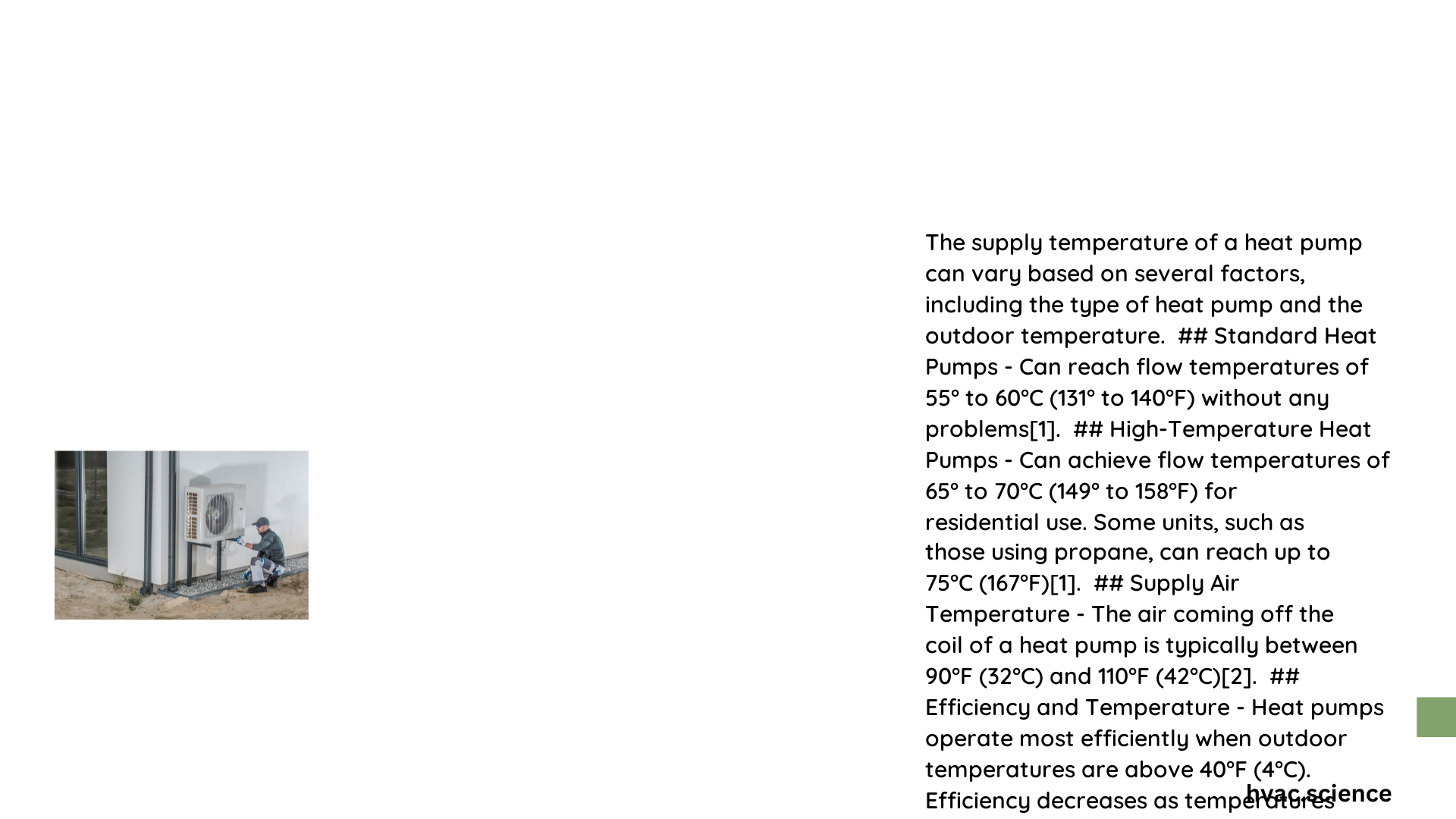Heat pump supply temperature is a critical factor determining system efficiency and home comfort. Understanding the nuanced relationship between outdoor temperatures, system design, and heat output can help homeowners optimize their heating performance, reduce energy consumption, and maintain consistent indoor temperatures across varying environmental conditions.
What Determines Heat Pump Supply Temperature?
How Does Outdoor Temperature Impact Heat Pump Performance?
Heat pumps extract thermal energy from outdoor air, converting it into indoor heating. Their performance dramatically changes with temperature variations:
| Temperature Range | Performance Characteristics |
|---|---|
| Above 40°F (4°C) | Peak Efficiency Zone |
| 25-40°F (-4 to 4°C) | Moderate Efficiency |
| Below 25°F (-4°C) | Reduced Performance |
Key Performance Metrics
- Coefficient of Performance (COP)
- Measures heat pump efficiency
- Decreases as outdoor temperature drops
-
Typical range: 3-4 at optimal temperatures
-
Heating Seasonal Performance Factor (HSPF)
- Measures seasonal heating output
- Higher ratings indicate better overall efficiency
- Modern heat pumps: 8-10 HSPF rating
What Supply Air Temperatures Can You Expect?
Heat pump supply air typically ranges between 90°F and 110°F (32°C to 42°C). This temperature range ensures:
- Consistent indoor heating
- Energy-efficient operation
- Comfortable air circulation
How Do Different Heat Pump Types Perform?
Air-Source Heat Pumps
- Most common residential system
- Efficient above 25-30°F (-4 to -1°C)
- Require supplemental heating in extreme cold
Ground-Source (Geothermal) Heat Pumps
- More consistent performance
- Less affected by outdoor temperature fluctuations
- Higher initial installation cost
- Superior efficiency across temperature ranges
What Strategies Maximize Heat Pump Efficiency?
- Proper System Sizing
- Match heat pump capacity to home’s square footage
- Prevents energy waste
-
Ensures optimal performance
-
Regular Maintenance
- Annual professional inspections
- Clean filters monthly
- Check refrigerant levels
-
Maintain outdoor unit clearance
-
Smart Thermostat Integration
- Programmable temperature settings
- Adaptive learning algorithms
- Remote temperature management
How Can Homeowners Improve Heat Pump Performance?
- Enhance home insulation
- Seal air leaks
- Use supplemental heating strategically
- Consider multi-zone heating systems
- Invest in high-efficiency models
Conclusion

Understanding heat pump supply temperature empowers homeowners to make informed decisions about their heating systems. By considering factors like outdoor temperature, system design, and maintenance, you can optimize comfort and energy efficiency.
